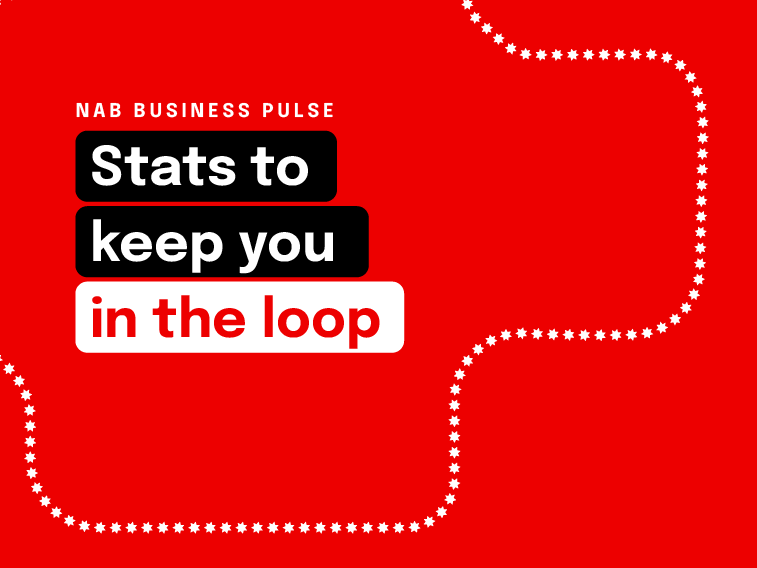Change is a constant in our global environment, but that's all the more reason to keep moving forward on your terms.


Article
Treating the Movember fundraising initiative like a start-up has helped its founders to grow it from a challenge among friends into a global event that has so far raised more than $650 million to help fight prostate cancer.
The Movember challenge has become such an established part of our calendar that it’s easy to assume it’s been around forever.
In fact, it only kicked off in 2003, when two Melburnians, Travis Garone and Luke Slattery, challenged each other to a mo-growing competition, then encouraged some mates to join them. It wasn’t until the following year that their light-hearted blokey lark got a little more serious, with those involved raising $54,000 for charity. Those first funds raised became the largest single donation the Prostate Cancer Foundation of Australia had ever received.
It was then that the friends realised they could develop their idea to make a difference.
“In 2004, Travis’s brother, Adam Garone, and one of Travis’s friends, Justin Coghlan, got heavily involved,” says Paul Villanti, Executive Director of Programs, Movember Foundation. “They knew many women who were passionate about supporting breast cancer charities, and they thought they could do something similar for prostate cancer, which is even deadlier than breast cancer.”
Movember could easily have fizzled, like so many other amusing but short-lived fundraising concepts. Instead, it’s grown to become the world’s biggest men’s health charity, and in 2014, it was ranked 72nd out of the world’s top 500 non-government organisations.
“We’ve had everyone from secondary school students to a 108-year-old Norwegian grow moustaches,” Villanti says. “NAB has been a big supporter since the early days, and 300 of their staff members participated in 2015.”
The fact that Movember has been able to scale up so spectacularly is a result of its key players operating like entrepreneurs launching a start-up.
In 2006, Movember expanded into New Zealand. In 2007, the decision was made to go for broke and take it global.
“Adam Garone, the CEO, quit his job and moved to Los Angeles to establish Movember in North America,” Villanti says. “Justin Coghlan also handed in his notice, and moved to the UK to develop it in that part of the world. They took significant risks. They were funding Movember out of their own pockets, working out of their flats until they could afford offices.”
The overseas expansion was a gamble that paid off. By November 2007, Movember had been established, with the help of the relevant local prostate cancer foundation or charity, in Canada, Spain, the UK and the US. Subsequently, Austria, Belgium, the Czech Republic, Denmark, Finland, France, Hong Kong, Germany, Ireland, the Netherlands, Norway, Singapore, South Africa, Sweden and Switzerland got with the program.
Movember now has around 110 permanent staff in six nations overseeing more than 1000 different projects. The foundation’s initial focus on prostate cancer has broadened to include testicular cancer, mental health and physical fitness.
Villanti puts Movember’s continuing success down to a solid initial concept that’s been kept relevant through unceasing inventiveness.
“Movember is about having fun while doing good,” he says. “Plus, there’s that aspect of masculine competition mixed in. Men are trying to outdo each other with their moustaches – that’s the sustaining foundation. But it’s also important that an entrepreneurial spirit continues to pervade the organisation.
“Movember isn’t just about prostate cancer anymore. It’s now fighting other big killers of men, such as testicular cancer and suicide. Movember can and does fund risky projects that governments shy away from. It collaborates with lots of other organisations, such as beyondblue.”
Of course, sometimes even the most resourceful social entrepreneurs can be blindsided by unforeseen events. When hipsters popularised the beard in 2013, Movember’s fundraising took a hit.
“Men didn’t want to shave off their beards and then grow a moustache from scratch,” explains Villanti.
But experiences like this one only encourage the team to remain innovative. To broaden Movember’s appeal, they launched the MOVE challenge, which encourages men who don’t want to grow a moustache – along with women who want to get involved – to do some physical activity every day in November while raising funds and awareness of men’s health.
“The mo will always be a key part of Movember,” says Villanti. “But we need to keep coming up with fun, healthy challenges for those who can’t or don’t want to grow a moustache.”
Curing cancer and preventing suicide are ambitious objectives. But the team behind Movember, who have so far raised more than $650 million globally for men’s health initiatives, have never hesitated to set themselves breathtaking goals.
“What those behind Movember would define as success is a significant reduction in prostate cancer rates – as well as in male suicide rates, which have remained stubbornly high across many countries,” says Villanti.
“The mortality rate for prostate cancer is now heading in the right direction. We’d like to believe Movember, along with other organisations, has played an important role in that happening.”
“We’ve had everyone from secondary school students to a 108-year-old Norwegian grow moustaches.”
Paul Villanti
More from NAB:
© National Australia Bank Limited. ABN 12 004 044 937 AFSL and Australian Credit Licence 230686.